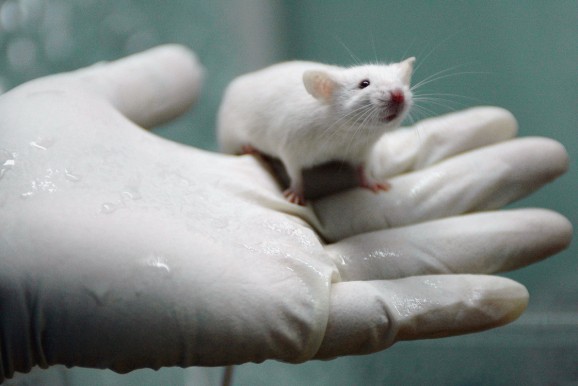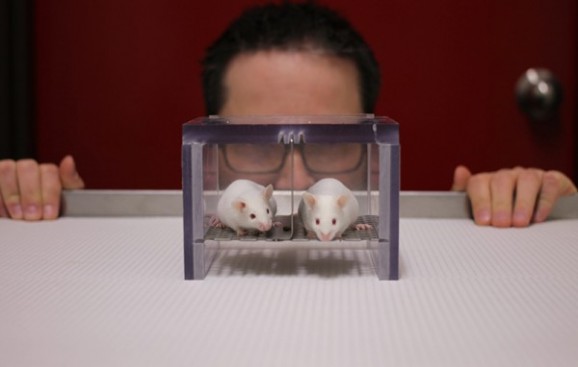Male Scent: A New Painkiller?
 If you’re a male researcher or lab assistant, you may have unwittingly compromised the results of studies you’ve done with animals. It’s not really your fault, though — blame the way you smell.
If you’re a male researcher or lab assistant, you may have unwittingly compromised the results of studies you’ve done with animals. It’s not really your fault, though — blame the way you smell.
McGill University neuroscientist Jeffrey Mogil began to suspect something was affecting his lab results when lab rats seemed to feel just fine after getting injections designed to irritate them and cause a response indicative of pain. At first, the team thought maybe the injection was bad, but after ruling out that and a few other possibilities, they thought the most likely explanation was the presence of a researcher.
A number of years ago, Mogil conducted studies indicating that lab animals exhibit less of a pain response when in the presence of a person — including fake people, such as a cardboard cutout of Paris Hilton. This prompted another series of studies in which animals were assessed on their pain responses when a person was in the room, and the results varied, indicating that the mere presence of a person didn’t necessarily negate the pain response, unless that person was male. Their studies showed that the lab rodents displayed a pain response about 36% less when a male was in the room as opposed to a female or no one at all.
Then the question became why. Was it the appearance of a man — after all, the Paris Hilton cutout seemed to have some kind of effect — or was it something else? Mogil’s next step was to see what happened when instead of being present in the lab, people put worn t-shirts near the animals. This experiment duplicated the results — the presence of t-shirts worn by males caused a 36% greater drop in measurable pain response than the presence of t-shirts worn by women. And if two t-shirts, one worn by a male and one worn by a female, were in the room, there was negligible impact on the animals’ pain response. Then they tried the study again, this time with bedding that male mice (unknown to the lab animals) and guinea pigs had used, as well as bedding that unsterilized male dogs and cats had used. Again, the result was the same — it appears that male odors have an analgesic effect.
Mogil and his team did further testing to deduce whether the animals were somehow hiding their degree of pain and found that they were actually feeling less of it due to heightened stress levels which produces an increased level corticosterone and counteracts the pain, much like adrenaline does for humans. Mogil calls this a “primordial response,” and says it’s related to hunting and guarding one’s territory, both of which require an exhibition of strength.
Mogil says that while this affects animal research, it’s “a confounding factor, not a fatal one.” Still, researchers should pay attention to the possibility that male odors can change the outcome of their experiments. It’s even possible that male odor could have an effect on human trials, which is something scientists plan on studying in the future. In clinical trials, it can be tough to replicate some results, and this may be part of the reason why.
I wonder what this means for male locker rooms.













